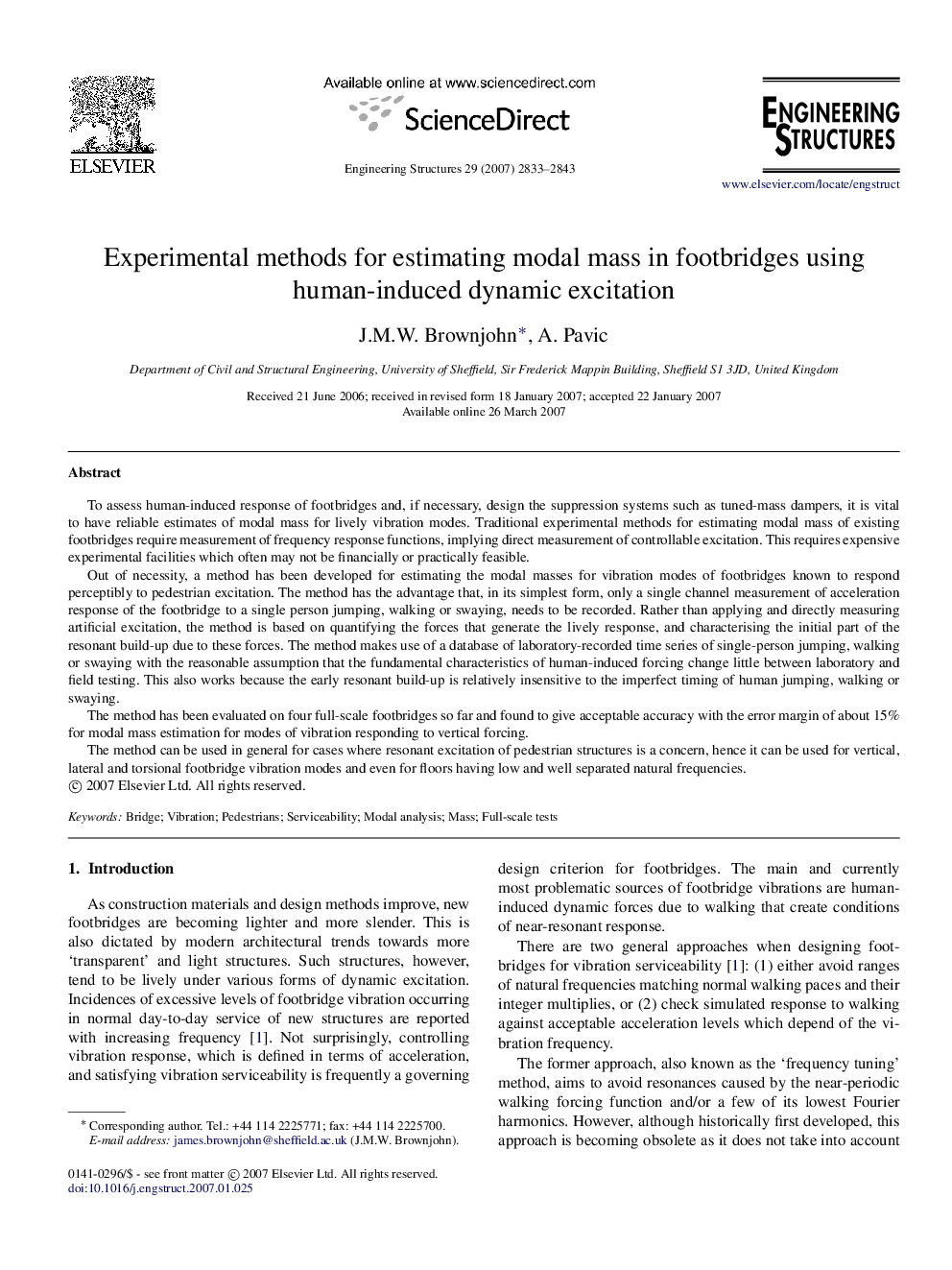| Article ID | Journal | Published Year | Pages | File Type |
|---|---|---|---|---|
| 269382 | Engineering Structures | 2007 | 11 Pages |
To assess human-induced response of footbridges and, if necessary, design the suppression systems such as tuned-mass dampers, it is vital to have reliable estimates of modal mass for lively vibration modes. Traditional experimental methods for estimating modal mass of existing footbridges require measurement of frequency response functions, implying direct measurement of controllable excitation. This requires expensive experimental facilities which often may not be financially or practically feasible.Out of necessity, a method has been developed for estimating the modal masses for vibration modes of footbridges known to respond perceptibly to pedestrian excitation. The method has the advantage that, in its simplest form, only a single channel measurement of acceleration response of the footbridge to a single person jumping, walking or swaying, needs to be recorded. Rather than applying and directly measuring artificial excitation, the method is based on quantifying the forces that generate the lively response, and characterising the initial part of the resonant build-up due to these forces. The method makes use of a database of laboratory-recorded time series of single-person jumping, walking or swaying with the reasonable assumption that the fundamental characteristics of human-induced forcing change little between laboratory and field testing. This also works because the early resonant build-up is relatively insensitive to the imperfect timing of human jumping, walking or swaying.The method has been evaluated on four full-scale footbridges so far and found to give acceptable accuracy with the error margin of about 15% for modal mass estimation for modes of vibration responding to vertical forcing.The method can be used in general for cases where resonant excitation of pedestrian structures is a concern, hence it can be used for vertical, lateral and torsional footbridge vibration modes and even for floors having low and well separated natural frequencies.
